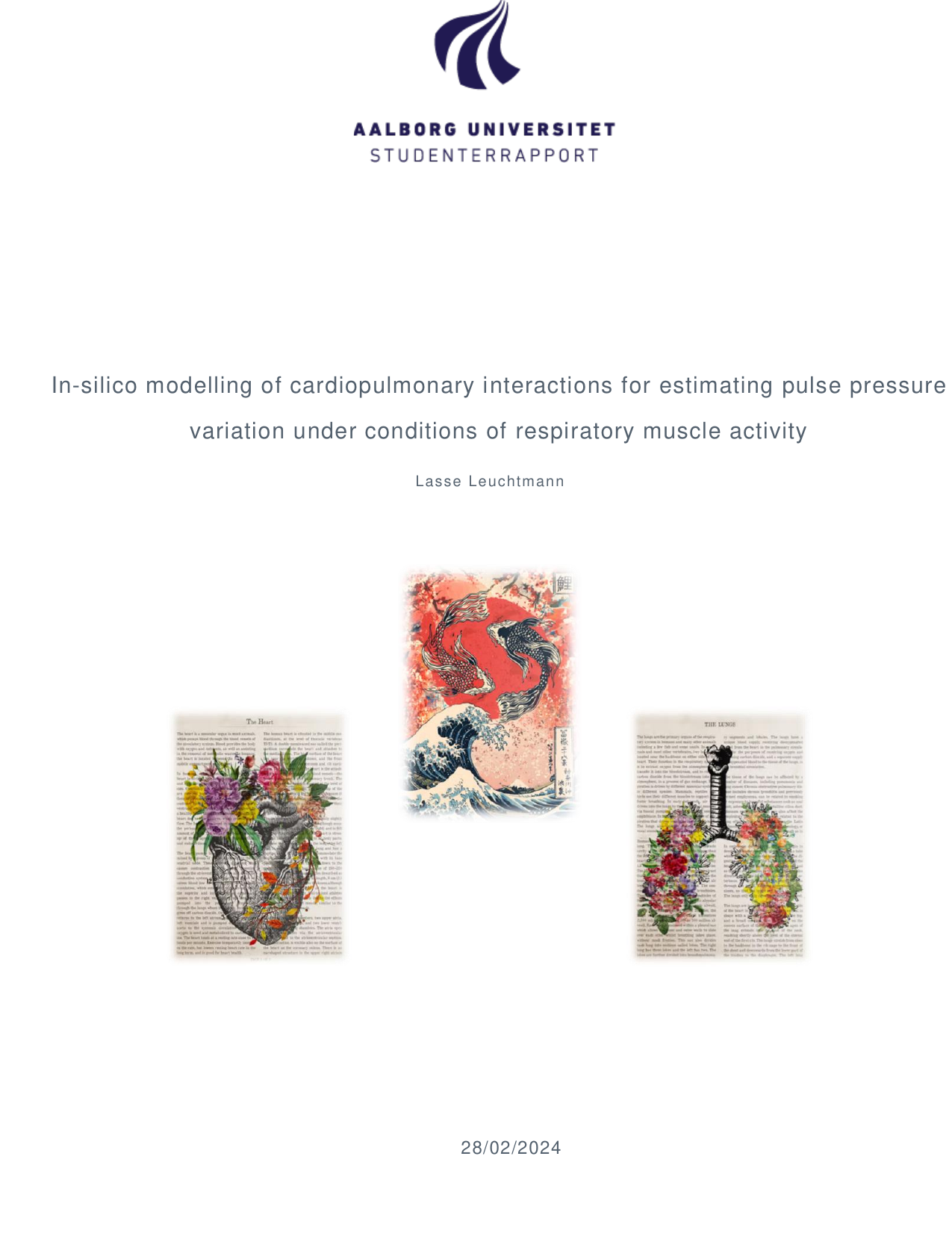
In-silico modelling of cardiopulmonary interactions for estimating pulse pressure variation under conditions of respiratory muscle activity
Term
4. term
Publication year
2024
Submitted on
2024-03-01
Pages
102
Abstract
Introduction Patients receiving mechanical ventilation (MV) often require fluid resuscitation, due to e.g. sepsis or trauma. However, only 50\% of patients are capable of adapting their cardiac output (CO) in response to fluid resuscitation. The ability to adapt is termed fluid responsiveness (FR). Pulse pressure variation (PPV) is a reliable biomarker for predicting FR. However, PPV is unreliable when respiratory muscle activity (P_mus) occurs. This study hypothesises a method for augmenting the PPV signal with an extra indice, -PPV, derived from the effect of pressure support (PS) variation on P_{mus}. The study conducted research into construction of a physiological model capable of predicting +PPV/-PPV. Methods A respiratory model based on the equation of motion (EOM), an intrathoracic model employing the alpha parameter and a cardiovascular model were combined with a feature extraction and optimization framework to predict +PPV/-PPV, and tested on data from a clinical trial researching the hypothesis. Results The model predicted +PPV/-PPV accurately on average, with all but one test resulting in Delta mean < 0.55%. Furthermore, the model predicted +PPV with R^2=19 and R^2=0.62, performing best at high PS timeframes. Discussion The models predictions were most accurate in conditions of positive intrathoracic pressure (P_{it}), and performance decreased at conditions of negative P_{it}. Thus, it is hypothesised that augmenting the models SB module as well as the data processing and extraction phases could improve the models performance. Testing on a larger sample size is necessary to generalize this conclusion. Conclusion The cardiopulmonary model was capable of relatively accurately predicting the +PPV/-PPV signal at conditions of high P_{it}, and it is hypothesised that research into the SB module could improve performance on the entire signal.
Documents
